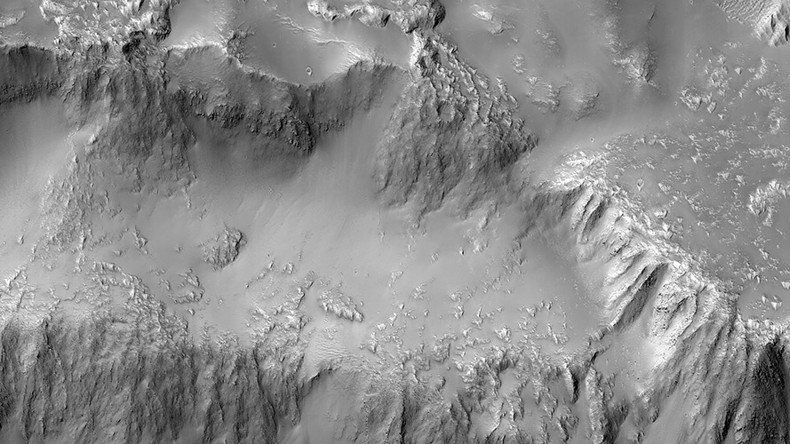Martian ‘Niagara Falls’ shows evidence of dormant, ancient lava flows on Red Planet (PHOTO)

The surface of Mars is largely a desolate wasteland where nothing grows and very little water flows. However, newly released NASA images give an insight into how lava once cascaded down Martian cliffs in a volcanic province of the Red Planet.
READ MORE: Lunar volcanoes: New NASA images highlight volcanic activity on the moon
A 3D image taken by NASA’s Mars Reconnaissance Orbiter shows evidence of large lava flows around the rim of a 30-kilometer-diameter crater. The space agency compared the volcanic formation to waters hurtling over a waterfall much closer to home.
Remnants of ancient lava flows that once created multi-level falls on the Red Planet are seen by our Mars orbiter: https://t.co/a7XAuFfhm6pic.twitter.com/3CfdTNScjn
— NASA (@NASA) June 28, 2017
The picture was captured in an area known as Tharsis, a volcanic plateau home to the massive shield volcano Olympus Mons.
The 25-kilometer-tall mountain is approximately the same size as the state of Arizona and is 100 times bigger than the largest volcano on earth.
According to NASA, the sheer amount volcanic material around the “Niagara Falls” Tharsis crater saw lava breach the crater rim at four locations.
The varying shades of color visible on the pyroclastic material are an indication that lava flowed in the area on a number of occasions over a period of time, NASA has noted.
READ MORE: Just like Mars? NASA team to spend 8 months on top of Hawaii volcano
It is yet another example of the Mars’ long history of volcanic activity, which was first explored in depth during NASA’s 1971 Mariner Mars mission.
The 70s space probe is a distant precursor to the Mars Reconnaissance Orbiter, which has been collecting data from above the Red Planet since March 2006.












